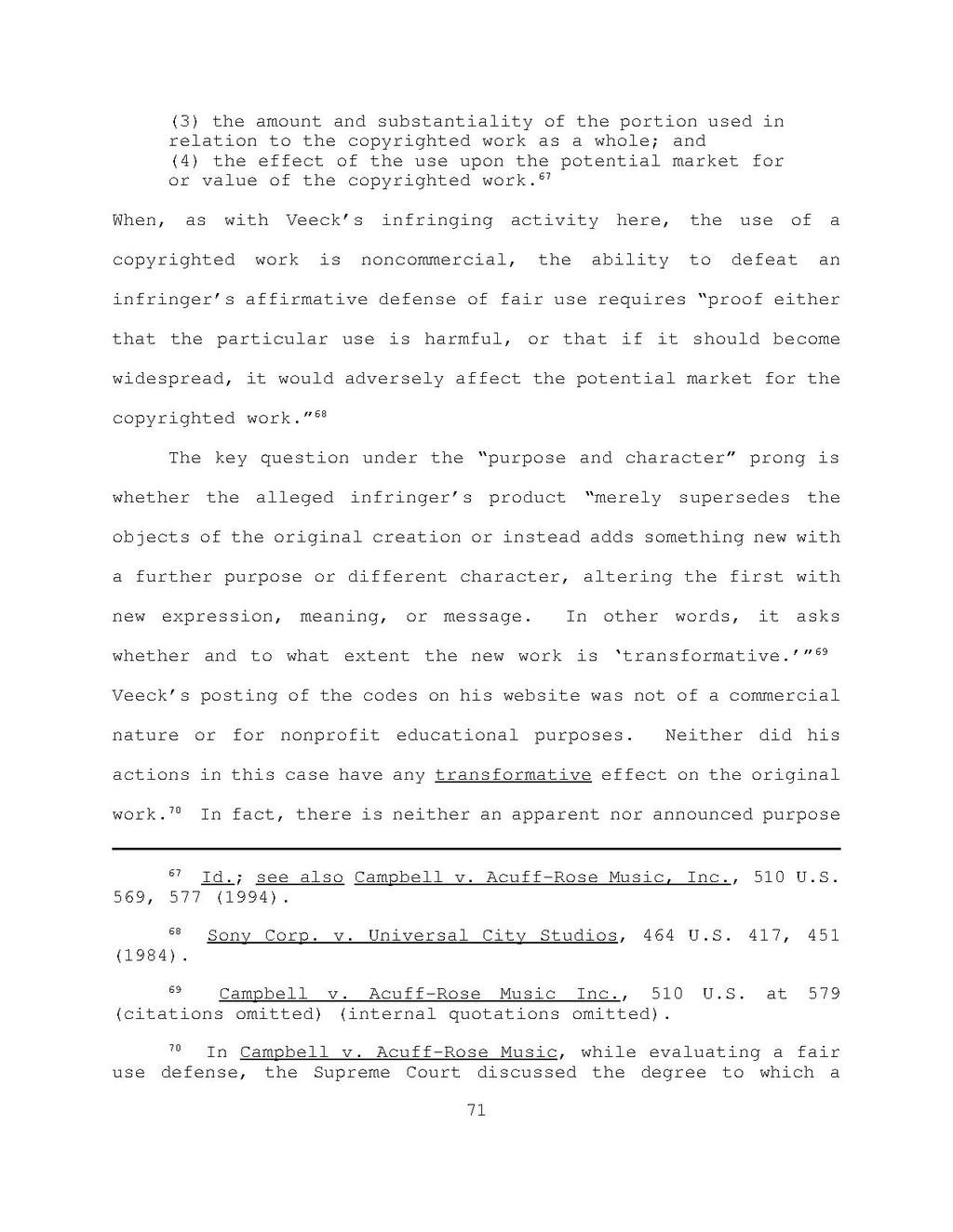(3) the amount and substantiality of the portion used in relation to the copyrighted work as a whole; and
(4) the effect of the use upon the potential market for or value of the copyrighted work.[1]
When, as with Veeck's infringing activity here, the use of a copyrighted work is noncommercial, the ability to defeat an
infringer's affirmative defense of fair use requires "proof either that the particular use is harmful, or that if it should become widespread, it would adversely affect the potential market for the copyrighted work."[2]
The key question under the "purpose and character" prong is whether the alleged infringer's product "merely supersedes the objects of the original creation or instead adds something new with a further purpose or different character, altering the first with new expression, meaning, or message. In other words, it asks whether and to what extent the new work is 'transformative.'"[3] Veeck's posting of the codes on his website was not of a commercial nature or for nonprofit educational purposes. Neither did his actions in this case have any transformative effect on the original work.[4] In fact, there is neither an apparent nor announced purpose
- ↑ Id.; see also Campbell v. Acuff-Rose Music, Inc., 510 U.S. 569, 577 (1994).
- ↑ Sony Corp. v. Universal City Studios, 464 U.S. 417, 451 (1984).
- ↑ Campbell v. Acuff-Rose Music Inc., 510 U.S. at 579 (citations omitted) (internal quotations omitted).
- ↑ In Campbell v. Acuff-Rose Music, while evaluating a fair use defense, the Supreme Court discussed the degree to which a
71
